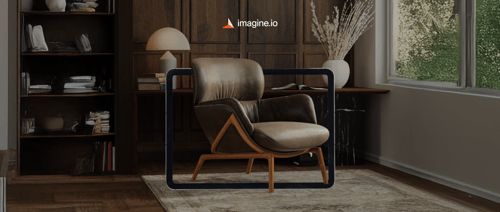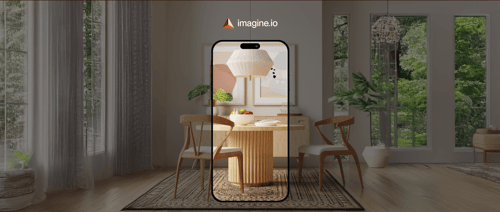Imagine a designer in a vibrant Chicago studio, sketching a modern armchair destined for a showroom in High Point. Once, turning that sketch into a prototype meant weeks of labor, costly materials, and a high-stakes photoshoot to capture the product's essence. Now, that same designer uploads a 3D model to a cloud platform and, in mere minutes, generates visuals so lifelike they rival professional photography. This is the power of AI-powered rendering, and it's revolutionizing how furniture brands innovate, iterate, and launch products in a fiercely competitive market.
The Urgent Need to Rethink Furniture Prototyping
Traditional prototyping in furniture design is a slog. It demands hefty investments in materials, skilled labor, and studio photography often costing thousands before a single product hits the market. The process is painfully slow, with design iterations and approvals dragging on for weeks or even months. In today's fast-paced retail landscape, where consumers expect fresh designs on platforms like Ruggable or Sinomax USA at breakneck speed, this old-school approach is a liability. Brands need agility, precision, and cost efficiency to stay ahead.
AI-powered rendering platforms like imagine.io are rewriting the rules. By creating digital twins virtual replicas of physical products these tools enable designers to visualize, refine, and share concepts in real time. No shipping crates, no studio setups, just a streamlined workflow that's gaining traction in design hubs like Austin, Las Vegas, and Toronto. A report from Global Market Estimates projects steady growth in the AI interior design market across the U.S. and Canada through 2029, underscoring the shift toward technology-driven solutions in furniture design.
Virtual Prototyping: The Future of Furniture Design
Digital Twins Redefine Creativity
Furniture manufacturers are embracing digital twins to explore designs without touching a single piece of wood or fabric. These virtual models allow teams to test colors, textures, and configurations with unprecedented flexibility. In showrooms like those in High Point, where trends are born, or Las Vegas, where buyers converge, digital twins let brands present entire collections with photorealistic precision. This approach not only cuts costs but also empowers designers to take bolder creative risks.
Cloud Rendering: Fast, Scalable, Collaborative
Gone are the days when rendering high-quality images took days of processing power. Cloud-based platforms like imagine.io leverage AI to produce stunning visuals in minutes, whether for a single ottoman or a sprawling catalog. Designers in New York can collaborate seamlessly with teams in Dallas or Canada, tweaking designs and sharing assets instantly. This speed isn't just a luxury it's a strategic advantage in a market where launching a product a week early can mean capturing a larger share of consumer attention.
AI in Action: Transforming Furniture Workflows
Slashing Costs Without Sacrificing Quality
A leading U.S. home goods brand recently ditched physical prototypes for AI-generated 3D assets, using imagine.io to create thousands of visuals for upholstered chairs and wooden dining sets. The result? Prototyping costs plummeted, while the images were so lifelike that eCommerce executives couldn't tell them apart from studio photos. This level of quality, achieved without the expense of physical samples or photoshoots, is prompting brands to rethink their entire production pipeline.
Accelerating Market Rollouts
The benefits extend beyond prototyping. AI-generated assets are ready for immediate use on platforms like KitchenAid or KegWorks, streamlining approvals and marketing campaigns. Instead of waiting for physical samples to be photographed, brands can launch products faster, meeting the relentless demand for new designs. For omnichannel retailers, this means unified visuals across Instagram, LinkedIn, and YouTube, all produced from a single, versatile platform.
Consistency Across Channels
In a digital age where consumers flit between social media and eCommerce sites, visual consistency is critical. Imagine.io's all-in-one platform delivers everything from lifestyle images to 360° views and interactive configurators. For brands like Kohler or Hunter Fan, this ensures that every product image whether on a website or a Facebook ad tells a cohesive brand story, fostering trust and recognition.
Challenges Holding Back AI Adoption
Subscription Models vs. Traditional Workflows
Despite the promise, not every brand is ready to embrace AI rendering. Some hesitate at imagine.io's subscription-based pricing, favoring the predictability of one-off agency projects. For companies accustomed to paying per photoshoot, the shift to a recurring cost model can feel daunting, even if the long-term savings are clear.
Navigating Custom Pricing
Unlike competitors with standardized pricing, imagine.io offers tailored plans to match each client's needs. While this customization ensures a perfect fit, it can intimidate brands used to simpler, off-the-shelf solutions. For some, the flexibility comes with a perceived complexity that requires a leap of faith.
Overcoming Agency Loyalty
Large furniture firms often rely on pre-vetted agencies, creating a barrier for new platforms like imagine.io. Building trust and integrating with established workflows is a challenge, particularly in cities like Los Angeles or Chicago, where legacy processes dominate. Convincing these brands to rethink their vendor relationships takes time and proof of value.
Why AI Rendering Is a Game-Changer
Faster Launches, Bigger Impact
AI rendering doesn't just save time it transforms what's possible. With imagine.io, brands can shrink product launch timelines from weeks to days, producing visuals for thousands of SKUs at a fraction of the cost. This agility is a lifeline for companies managing complex catalogs, allowing them to stay nimble in a market that rewards speed.
Versatility for Every Platform
From Instagram posts to eCommerce listings, imagine.io's platform delivers a full suite of visual assets: photorealistic images, videos, 360° views, and configurators. This versatility empowers brands like PepsiCo to create immersive, consistent experiences across channels, captivating customers at every touchpoint.
Building Brand Loyalty Through Visuals
Consumers today expect seamless experiences, whether browsing a digital catalog or scrolling through LinkedIn. AI platforms ensure that every image, from a sleek barstool to a plush sofa, aligns with the brand's aesthetic. This consistency strengthens customer trust, driving loyalty and repeat purchases in a crowded marketplace.
The Path Forward: A Virtual-First Future
Quality That Rivals Reality
Internal studies by imagine.io reveal a remarkable fact: even seasoned eCommerce leaders can't distinguish their AI-rendered images from professional photographs. This unmatched quality, combined with lightning-fast production, eliminates the trade-offs between cost, speed, and excellence. Brands can now deliver stunning visuals without breaking the bank.
A Market Poised for Growth
The future is virtual, and furniture brands are taking notice. The ability to scale visuals for sprawling catalogs, marketplaces, and social channels like YouTube and Facebook is driving adoption across North America. As noted in the Global Market Estimates report, the AI interior design market is expected to see robust growth in the U.S. and Canada through 2029, fueled by demand for tools that deliver precision and efficiency. For furniture firms, the choice is stark: adopt AI rendering now or risk falling behind competitors who do.
Frequently Asked Questions
How does AI-powered rendering reduce furniture prototyping costs?
AI-powered rendering platforms like imagine.io eliminate the need for expensive physical prototypes, costly materials, and professional photoshoots that traditionally cost thousands of dollars. By creating digital twins and photorealistic visuals in minutes rather than weeks, furniture brands can cut prototyping costs by up to 70% while maintaining studio-quality images that are indistinguishable from traditional photography.
What are digital twins in furniture design and how do they work?
Digital twins are virtual replicas of physical furniture products that allow designers to visualize, test, and refine concepts without creating physical prototypes. Using cloud-based AI platforms, designers can experiment with different colors, textures, and configurations in real-time, enabling faster iterations and bolder creative risks while reducing material waste and production timelines from weeks to days.
Can AI-generated furniture images replace professional photography for eCommerce?
Yes, modern AI rendering platforms produce images so lifelike that even experienced eCommerce executives cannot distinguish them from professional studio photographs. These AI-generated visuals are ready for immediate use across all channels including websites, social media, and marketplaces, providing consistent brand imagery while dramatically reducing the time and cost associated with traditional product photography workflows.
Disclaimer: The above helpful resources content contains personal opinions and experiences. The information provided is for general knowledge and does not constitute professional advice.
You may also be interested in: Imagine.io | Award Winning 3D + AI Product Visualization
Struggling with expensive, outdated product visuals that slow down your creative process and stunt eCommerce growth? imagine.io's AI-powered platform empowers furniture, home décor, and textile brands to effortlessly produce striking 3D images, immersive videos, AR experiences, and interactive configurators. Cut production costs up to 70%, boost conversions 5X, speed up prototyping, and supercharge your online sales. Ready to elevate your product visuals and captivate customers? Book a demo with imagine.io today!
Powered by flareAI.co




.png?width=500&name=How%20to%20Add%20a%203D%20Product%20Configurator%20to%20Your%20WordPress%20Website%20(Complete%20B2B%20Guide).png)
















%20(1).png?width=500&name=Why%20Exploded%20Mattress%20Views%20Matter%20(And%20How%20to%20Generate%20Them)%20(1).png)
.png?width=500&name=Best%20Shopify%20Product%20Configurator_%20How%20to%20Choose%20the%20Right%20One%20(2).png)
.png?width=500&name=Why%20Exploded%20Mattress%20Views%20Matter%20(And%20How%20to%20Generate%20Them).png)



.png?width=500&name=Best%20Shopify%20Product%20Configurator_%20How%20to%20Choose%20the%20Right%20One%20(1).png)







.png?width=500&name=How%203D%20Rendering%20Can%20Make%20or%20Break%20Your%20Industrial%20Design%20Pitch%20(1).png)








%20with%20Digital%20Twins%20and%203D%20Visualization.png?width=500&name=Optimizing%20Your%20Digital%20Asset%20Management%20(DAM)%20with%20Digital%20Twins%20and%203D%20Visualization.png)




.png?width=500&name=Styling%20Home%20Decor%20for%202025_%20From%20Global%20Influences%20to%20Playful%20Personalization%20(1).png)
